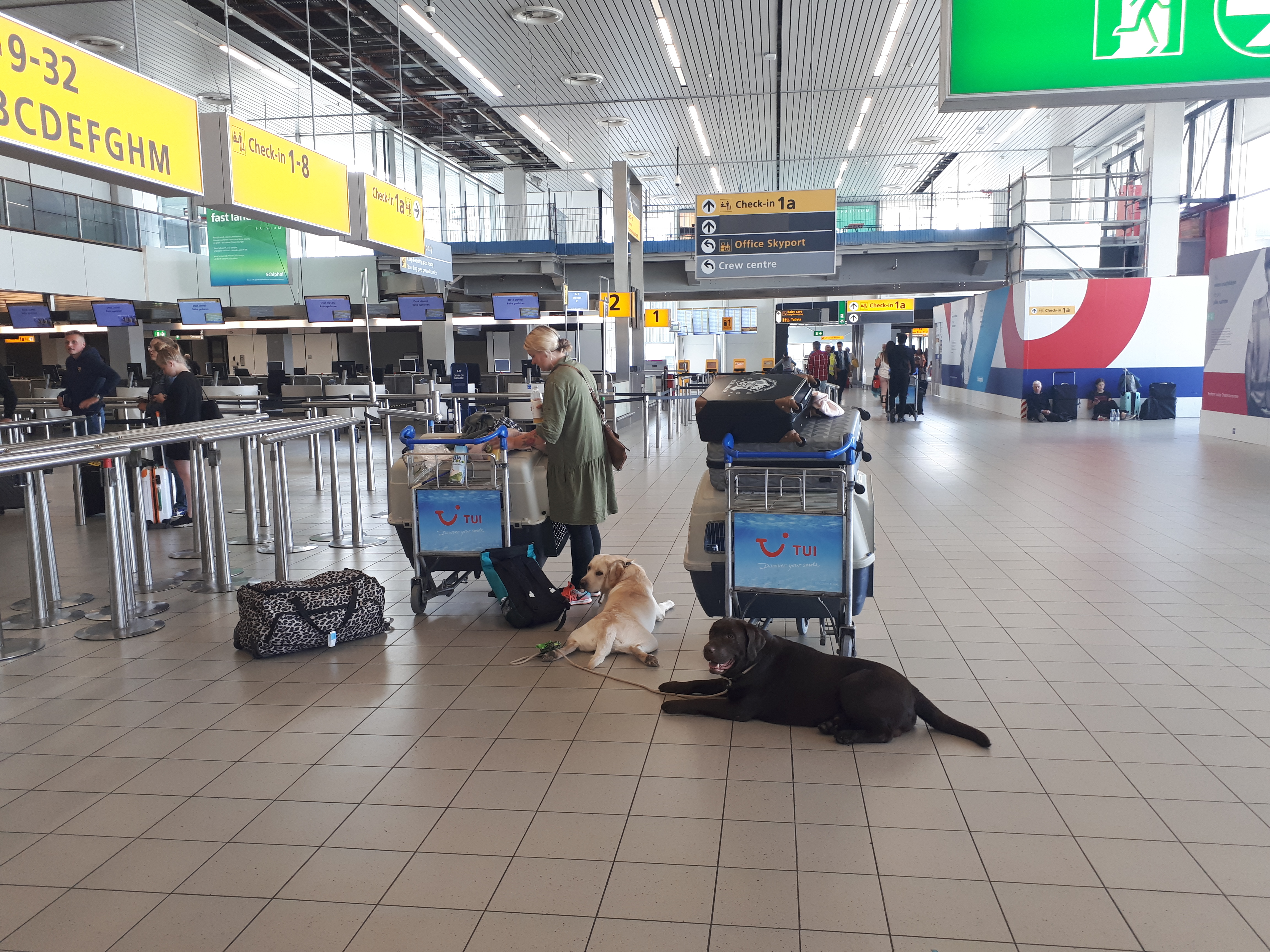
A puppy is most receptive to new experiences before reaching the age of 16 weeks, and adapting to new situations becomes significantly more challenging for them after that. It is never too late to start, and even with an older dog, it is possible to socialize them well; it just takes more time and patience.
“The Puppy’s Rule of Twelve” is a general guide that can be used for socializing family, working, or sports dogs. When done correctly, it provides the puppy with a solid set of experiences, making them “bombproof” and helping them cope with unexpected situations. Many breeders have started practicing puppy socialization from the puppy box (“The Puppy’s 7 Rules”).
Throughout this process, it is important to move according to the puppy’s pace, ensuring that the puppy emerges from each situation with a sense of achievement and positive emotions.
By the time your puppy reaches 12 weeks, they should have:
- Experienced 12 different surfaces – wood, mulch, grass, asphalt/concrete, glass, wet grass, gravel, mud, sand, puddles, metal grates, uneven surfaces, metal, crinkly foil, plastic wrap, board, chair, etc.
- Played with 12 different toys – furry toys, hard toys, large and small balls, toys that make funny sounds, wooden items, paper/cardboard items, milk jugs, metal items, etc.
- Been to 12 different places – front yard, other people’s homes, lake, pond, river, boat, elevator, stairs, car, moving car, veterinary clinic (just to say “hi” and have a positive experience), grooming salon, etc.
- Met and played with 12 different people outside the family – adult men, adult women, children, elderly adults, people in wheelchairs, people on crutches, bearded people, people with hats, people with sunglasses, etc.
- Been exposed to 12 different noises – opening garage door, doorbell, sirens, children playing, babies crying, jingling keys, hair dryer, large trucks, airplane noise, motorcycles, laundry machines, skateboards, rolling shopping carts, motorboats, clapping, loud singing, vacuums, lawnmowers, dropping pans, etc. It is very important to observe your puppy’s body language during this exercise to ensure they are not frightened or uncomfortable. Reduce the distance to the object or the level of noise until they are comfortable, and reward them with many tasty treats and praise. Take time to learn about canine body language and stress signals.
- Been exposed to 12 fast-moving objects (do not allow chasing) – skateboards, roller skates, bicycles, cars, trucks, boats, people/children running, cats, wild critters, scooters, vacuums, horses running, etc.
- Experienced 12 different challenges – climbing stairs, climbing on/off/around a box, going through a tunnel, climbing over obstacles, going in and out of doorways, walking on a wobbly table, playing hide-and-seek, jumping over something, getting a bath, etc.
- Handled by family members 12 times a week – held under the arm, held to the chest, held on the floor near the owner, held between the owner’s legs, head held, ears examined, paws held, held and temperature taken (with veterinarian’s assistance), held like a baby, held and toenails trimmed (with veterinarian’s assistance), held in the lap, mouth examined, etc.
- Eaten from 12 different containers – wobbly bowl, plastic cup, ceramic bowl, coffee cup, pie plate, plastic, frying pan, KONG toy, dog-safe puzzle toy, spoon-fed, etc.
- Eaten in 12 different locations – backyard, front yard, crate, kitchen, basement, bedroom, laundry room, friend’s house, car, school, bathtub, up high (supervised), under an object, etc.